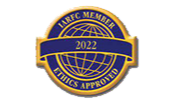How to Create Consistent Income in Retirement
Retirement is not just about reaching the end of your working years; it’s about financial independence, lifestyle freedom, and peace of mind. But how can retirees achieve a consistent income without the security of a regular paycheck? The answer lies in a carefully crafted retirement income strategy. At Agemy Financial Strategies, we support individuals and families in navigating retirement with confidence, using time-tested methods to help ensure income stability throughout retirement.
In this blog, we’ll explore how to create a consistent income in retirement, the key components of a reliable income plan, and how Agemy Financial Strategies can help you make the most of your golden years.
Why Consistent Income Matters in Retirement

During your working years, income is typically steady and predictable, thanks to regular paychecks. Once you retire, the paychecks stop, but the bills don’t. From housing and healthcare to groceries and travel, your financial needs continue and may even increase with time.
Without a structured income plan:
- You may run out of money too early.
- You could end up relying too heavily on potentially disappearing Social Security.
- You might not be able to maintain your desired lifestyle.
- Market downturns could wipe out years of savings.
This is why replacing your paycheck with consistent, reliable income sources is essential to achieving a successful and stress-free retirement.
Step 1: Know Your Retirement Expenses
The first step in building a retirement income strategy is understanding what your expenses will look like in retirement. These generally fall into two categories:
Essential Expenses
These are non-negotiable, must-have costs such as:
- Housing (mortgage, rent, property taxes)
- Utilities
- Food and groceries
- Insurance premiums
- Healthcare and prescriptions
- Transportation
Discretionary Expenses
These are lifestyle choices that add joy and fulfillment:
- Travel and vacations
- Dining out
- Hobbies and entertainment
- Gifts and charitable donations
Having a clear picture of both helps you estimate how much income you’ll need every month. A good rule of thumb is to plan for 70–80% of your pre-retirement income, but the actual figure depends on your lifestyle goals.
Step 2: Maximize Guaranteed Income Sources

Even for high-net-worth individuals, guaranteed income sources remain a cornerstone of a resilient retirement strategy. While HNWIs may not rely on these sources to meet basic living expenses, they can serve as powerful tools for risk mitigation, tax efficiency, estate planning, and legacy preservation.
Social Security: A Strategic Lever
Although Social Security may represent a relatively small portion of a high-net-worth retiree’s overall income, it’s still a valuable component of a well-optimized income plan. For married couples or those with significant longevity potential, a strategic claiming strategy can result in hundreds of thousands of dollars in additional lifetime benefits.
Key considerations include:
- Delaying benefits until age 70 to lock in the maximum monthly payment is a strategy often used by HNWIs to create longevity insurance.
- Coordinating spousal benefits to help maximize household income while minimizing taxation.
- Integrating Social Security with other income streams to help reduce the impact of provisional income taxes.
At Agemy Financial Strategies, we help clients incorporate Social Security into their broader tax and cash flow strategies, ensuring it supports their total financial picture.
Private Pension and Executive Benefit Plans
For HNWIs who are corporate executives, business owners, or former partners in professional firms, access to non-qualified deferred compensation plans (NQDCs), supplemental executive retirement plans (SERPs), or private pensions adds another layer of guaranteed income.
Decisions around:
- Lump sum vs. annuitized payouts
- Timing of distributions to minimize tax brackets
- Survivorship benefits or spousal continuation
This requires careful coordination with your retirement timeline and estate planning goals. These decisions can significantly affect lifetime income, legacy preservation, and tax exposure.
Annuities for Wealth Preservation and Longevity Risk
While annuities are often viewed as tools for middle-income retirees, HNWIs can use sophisticated annuity structures to help:
- Protect a portion of wealth from market volatility
- Create a tax-deferred income bridge
- Mitigate longevity risk without sacrificing liquidity
Types often used by HNWIs include:
- Fixed Indexed Annuities (FIAs) with income riders for protected growth and lifetime income guarantees.
- Deferred Income Annuities (DIAs) for longevity hedging and delayed income generation.
- Private Placement Annuities (PPAs) offering tax-deferral benefits within a customized investment chassis.
Agemy Financial Strategies frequently incorporates high-end annuity strategies as part of a diversified retirement income approach, especially for clients seeking predictable income that complements a more aggressive or growth-oriented portfolio.
Disclaimer: Annuities are insurance products that may offer guarantees of income or principal protection, but they are not without risks. Annuities may involve fees, surrender charges, and limitations on liquidity. Guarantees are subject to the claims-paying ability of the issuing insurance company and are not backed by any government agency. Carefully consider your financial objectives, risk tolerance, and the terms of the annuity contract before purchasing.
Step 3: Build a Diversified Investment Portfolio for Income
Guaranteed income may not cover all your expenses, which is why investment income plays a crucial role. A diversified portfolio can help generate steady cash flow while managing risk.
Dividend-Paying Stocks
Blue-chip companies with a strong history of dividend payments can provide income and potential for growth. These stocks often increase dividends over time, helping you keep up with inflation.
Bonds and Fixed Income Investments
Bonds offer more stability than stocks and can provide regular interest payments. Consider:
- Government Bonds
- Municipal Bonds (often tax-free)
- Corporate Bonds
- Bond ETFs or Mutual Funds
Real Estate Investment Trusts (REITs)
REITs offer exposure to real estate with the benefit of regular income through dividends. They can help diversify your income stream and add inflation protection.
Total Return Strategy
This approach focuses on balancing income and growth. Rather than chasing high-yield investments, it combines asset growth, dividends, and withdrawals to meet income needs sustainably.
Step 4: Create a Withdrawal Strategy
How you withdraw money from your accounts matters just as much as how you invest. A smart withdrawal strategy can help ensure you don’t outlive your savings.
The 4% Rule
A popular guideline suggests withdrawing 4% of your retirement savings annually. For example, if you have $1 million saved, you’d withdraw $40,000 in the first year.
However, this rule may be too simplistic. Here’s why:
- It was based on outdated market assumptions from the 1990s, including higher bond yields and different market conditions than we face today.
- It doesn’t account for sequence of returns risk, which can significantly impact portfolio longevity if poor market performance occurs early in retirement.
- It ignores tax implications and doesn’t differentiate between taxable, tax-deferred, or tax-free accounts, a crucial consideration for HNWIs with complex financial landscapes.
- Healthcare and long-term care costs have risen dramatically, often outpacing general inflation.
- It fails to reflect lifestyle flexibility and dynamic spending patterns that many retirees now prefer, particularly those with the means to spend more in early retirement and scale back later.
Instead of relying on a fixed withdrawal rate, Agemy Financial Strategies takes a dynamic, personalized approach that considers:
- Market conditions and investment performance
- Your actual spending patterns and goals
- Tax efficiency across account types
- Longevity projections
- Legacy and estate planning intentions
For high-net-worth retirees, flexibility, precision, and active income management are far more valuable than outdated rules of thumb.
Step 5: Plan for Inflation and Longevity
Inflation Protection
Even at modest levels, inflation erodes purchasing power over time. A $50,000 retirement income today might feel like $37,000 in 20 years if inflation averages 2%.
Inflation protection strategies include:
- Investing in growth assets like stocks
- Holding inflation-adjusted bonds (e.g., TIPS)
- Choosing annuities with inflation riders
- Delaying Social Security to increase monthly benefits
Longevity Planning
Living longer is a blessing, but it also increases the risk of outliving your assets. Planning for a 30+ year retirement is critical.
Strategies include:
- Having a guaranteed lifetime income stream (like annuities)
- Delaying withdrawals from IRAs/401(k)s until required (age 73 or later)
- Purchasing long-term care insurance or setting aside funds for future healthcare needs
Step 6: Don’t Overlook Healthcare and Long-Term Care Costs
Healthcare is one of the largest expenses in retirement. According to the latest Fidelity Retiree Health Care Cost Estimate, an average couple can expect to pay approximately $330,000 (after tax) to cover health care costs in retirement, and that number does not include the cost of long-term care.
Medicare Planning
Understanding when and how to enroll in Medicare is crucial. Parts A, B, C, and D offer different coverages and costs. You may also want supplemental coverage (Medigap).
Long-Term Care Insurance
This covers services not included in regular health insurance, such as in-home care, assisted living, or nursing homes. Planning ahead can preserve your assets and provide peace of mind for your family.
Step 7: Work with a Fiduciary Financial Advisor
Working with a fiduciary advisor like those at Agemy Financial Strategies helps ensure your best interest is always the top priority.
Here’s what a fiduciary advisor can help you with:
- Personalized retirement income plans
- Investment selection and risk management
- Tax-efficient strategies
- Estate and legacy planning
Our team at Agemy Financial Strategies brings decades of experience helping clients turn savings into sustainable income while helping protect against risk and uncertainty.
The Agemy Financial Strategies Approach

At Agemy Financial Strategies, our mission is to help clients retire with confidence and clarity. Our proprietary income planning process is designed to help ensure your money works for you, no matter how long you live.
What Sets Us Apart:
- Fiduciary advice with your best interests in mind
- Tailored plans based on your lifestyle goals and financial picture
- Proven income strategies with protection from market risk
- Tax-efficient withdrawal planning
- Transparent, honest guidance every step of the way
Whether you’re five years away from retirement or already there, we help you build and maintain an income stream that lasts.
Contact us today to schedule a complimentary consultation.
Final Thoughts
Creating consistent income in retirement isn’t a one-size-fits-all formula; it’s a tailored strategy that requires careful planning, diversified investments, and a deep understanding of your goals and financial landscape.
By combining guaranteed income sources, a diversified portfolio, tax-efficient withdrawals, and long-term planning, you can enjoy retirement with confidence and peace of mind. The key is starting early and working with a trusted fiduciary who understands your unique situation.
At Agemy Financial Strategies, we help you do just that. Let us show you how to turn your hard-earned savings into a sustainable retirement paycheck for life.
Contact us today to get started.
FAQs: Creating Consistent Income in Retirement
- What is the best way to create consistent income in retirement if I already have substantial assets?
Even with significant wealth, consistent income requires intentional planning. Diversifying income sources, such as tax-efficient portfolio withdrawals, real estate income, annuities, and deferred compensation plans, can help ensure stability while managing taxes and preserving capital. A custom strategy tailored to your goals, time horizon, and legacy plan is essential. - Do I still need Social Security if I have multiple income streams?
Yes, Social Security can still play a valuable role. While it may not be a primary income source for HNWIs, it offers longevity insurance and can help reduce drawdowns from investment accounts. Coordinated claiming strategies can also maximize household benefits and tax efficiency. - How can I protect my income strategy from market volatility?
We use a combination of risk-managed investments, fixed income products, and guaranteed income vehicles like annuities to help insulate income from market swings. A “bucket strategy” or time-segmented approach can help ensure immediate income needs are met without selling growth assets in a downturn. - What role do taxes play in my retirement income plan?
A significant one. HNWIs often have assets spread across taxable, tax-deferred, and tax-free accounts. The order of withdrawals, timing of RMDs, and capital gains strategy can drastically impact net income. We design tax-efficient income plans to help preserve wealth and reduce lifetime tax liabilities. - Is the 4% Rule a good guideline for someone with a multi-million-dollar portfolio?
Not necessarily. The 4% Rule is a generalized rule of thumb that may not account for today’s lower interest rates, market dynamics, or your personal financial situation. For HNWIs, a more flexible, customized withdrawal strategy aligned with your spending, tax strategy, and estate goals can be far more effective.
Disclaimer: This content is for educational purposes only and should not be considered financial or investment advice. Please consult with the fiduciary advisors at Agemy Financial Strategies before making any investment decisions













